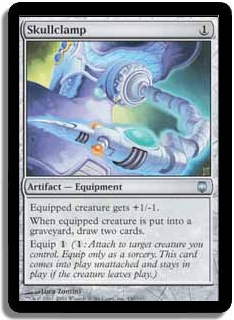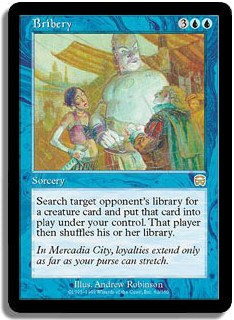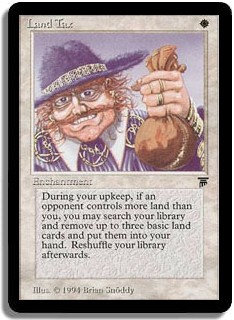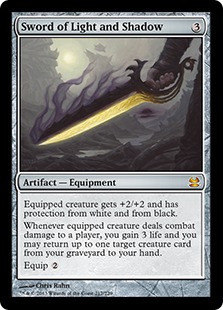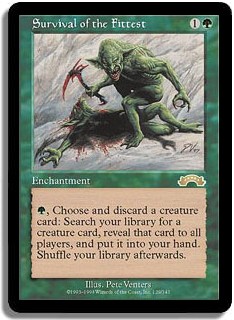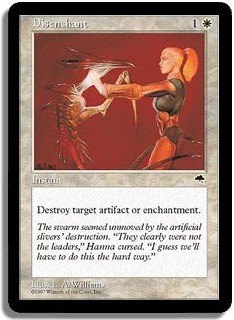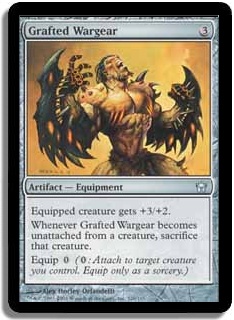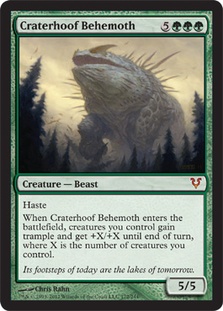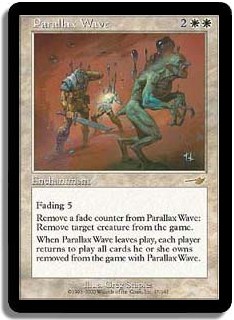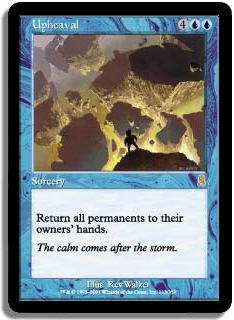*clap* *clap* *clapclapclap*
As I’m sure a handful of you know, I like sports. As such, I’ve tried to sprinkle some sports-related themes and jokes through past columns to varying degrees of success (read: mostly poorly received). Since I’m not going to stop liking sports, I’m probably going to continue to do this. Today is a good example. I promise you won’t miss any Cube goodies today even if you can’t tell Phil Jackson from Phil Mickelson.
Welcome to a hopefully-later-to-be underrated edition of Cubers Anonymous.
In our Magic culture, we use the terms overrated and underrated frequently when discussing a card’s place in Constructed metagames, our Cube, or even history. Though some people’s opinions may be based on some facts, ultimately each use of either of those terms is going to be just that: opinion. While Magic players certainly use these terms gingerly, the frequency pales in comparison to another avenue: sports fans and media. In both Magic and sports, being "rated"—whether over-, under-, or properly—is merely an extension of expression for people critiquing something based on an assumed value in relation to both past and anticipated performance.
In reality, these are just verbal metrics to convey how you feel about something comparatively in conversation. Something’s overrated-ness or underrated-ness can’t be measured, just analogized to the perceived value.
So what good is being concerned with something like this? In an extremely general sports-related conversation, regardless if it’s between talking heads or two guys at the bar, ultimately the validation of opinions between ranking sports teams comes at the end of the postseason when a team has won a championship. Most often, validation of this kind doesn’t turn opinion into fact since there are quite literally millions of hidden variables we’ll never be able to see when we’re trying to rate a group of people compared to another group. We have and will continue to use success (winning) as proof that we know exactly what we’re talking about, even when we’re talking about something as immeasurable as the ranking of sports teams.
Where the hell am I going with this, and what does it have to do with Magic? And Cube Draft in particular?
Circular Logic (Evoke Madness?)
In Magic, when we talk about something being overrated in a Limited format, especially one as ever changing as Cube, there is no validation point. We’re always basing our opinions on a card’s worth to us compared to other players/drafters. You’ll routinely hear stuff like "how is this still in the pack?!?!" or "I can’t believe that card didn’t come back to me!!!" while drafting; often these lines are simply the bemoaning of a drafter who was rating a card differently than at least one person in the draft. While none of the above situations are new or groundbreaking, it’s important to remember that this person is often you (even if you only say those things in your head), especially when we start talking about specific cards in a little bit.
Evaluations of cards in Cube change, or at least they should. One of the toughest things for a Cube owner or even frequent drafter to assess is when a card’s value has shifted from what you once knew. Some cards, especially creatures, can be easy to see; Calciderm became much less enticing to Cubers when the likes of Hero of Bladehold and Sublime Archangel were printed. We can often compare creatures easily (even though we occasionally make the wrong comparison), but most of the time we only do so when we’re forced by new cards being printed.
Today I’m going to ask a simple yet tough question:
Where do you think this card should be taken in a draft versus the average draft position of a card?
This is the crux of the overrated/underrated argument. If we wanted to sit back and watch 25 or so drafts of our Cubes, I supposed we technically could get some accurate data on this question for each card in our Cubes, but the application is so ridiculous that it’s not even remotely feasible. Since this article has been stewing around my brain for a while, I’ll look at ten cards that I think we should look at as not necessarily as Cube owners but Cube drafters to get a better understanding of each card’s true role and how to treat each card in a draft.
Now, as always, Your Mileage May Vary (YMMV) since I’m only using my drafting experiences, which is likely 90% my Cube and 10% everyone else’s combined. The cards listed as overrated are ones I think the general Cube drafter population values too much, and the ones listed as underrated are ones I think they value too little. I try to absorb as much Cube content around the net as possible as well as from people I Cube with often and will be taking those thoughts from other Cube content creators into account when I state my opinions.
What’s the Over/Under?
Before we go on, I want to jump in the way-back machine and check out this article from a little over a year ago. In that article, I outlined ten cards I thought should be cut from most Cubes. This article is not that article. One of the trickiest things for Cube owners is to reevaluate cards that have been in their Cubes for a long time—sometimes years. None of the cards we’re looking at below are cards that I think you should cut. They’re all powerful still, but I hope everyone with a rare Cube takes an honest look at how these cards perform in current times.
Overrated
Skullclamp
Let’s start with this one to get everyone’s feathers ruffled. I still believe this is one of the most powerful cards in a vacuum in just about every Cube it’s in. In this week’s deck at the bottom, I recently drafted one of the most powerful Skullclamp decks I’ve ever drafted. This card is generally good against both aggro and control and can bury an opponent in card advantage by itself. How can that be overrated?
Skullclamp, as well as the next two cards on this list, becomes much less potent when you’re facing off against higher-caliber opposition. "Well, obviously!" you say, and yes, of course, every card is technically worse against better competition. When you have a token-oriented deck or a deck with a simple way to off your own creatures, Skullclamp is often one of the three most powerful cards in your deck. When decks try to utilize Skullclamp as a generically powerful card, though, it becomes pretty easy to play around or not even interact with.
Since the advent of planeswalkers, the average power level of each card in a Cube deck has gone up significantly, and most are able to win by themselves or help you come from behind very quickly. This means that most decks can ill afford to have anything less than completely live draws in each game, whereas a few years ago you could just shove Skullclamp in any deck and wait around until you drew one of your three cards to interact positively with it.
Now you really need to see it in the first twenty cards of your draw to be able to really put it to work. It’s rare that control decks can use it, and midrange decks have a hard time as well once half of their draft is over. The times in those decks where you never get to see the "draw two" line is unfortunately numerous. Like all of these cards, there is always a deck that can use this to its fullest extent, but I don’t think you can continue to slam it whenever you see it whatever you’ve drafted and expect it to party like it’s 2005.
Bribery
Most people think that Bribery has gotten better as Magic evolves into a more creature-heavy game, but this is the exact reason I think it has gone the other way. Logic would say that as creatures get better, so does Bribery, but creatures haven’t gotten that much better—they’ve gotten that much cheaper. Against an aggro deck in my Cube, if your plan is to cast Bribery on turn 5 and take their best creature, you may be dead by the time you can untap for turn 6. There are so many powerful creatures that cost equal to or less than Bribery’s 3UU casting cost these days that the five mana you use to cast Bribery isn’t often getting you the discount it once did.
Now, of course, Reanimator and ramp decks still wet their beds to a Bribery, but it’s a tougher sell against anything else. Unless you’re a mono-blue deck without a finisher, you can usually spend that mana on an equally impressive creature that goes along with your deck’s plan of attack rather than what you perceive to be the best stopgap to dying to the cohesive plan your opponent is likely to be doing.
Before I tuned my Cube to aggro, I routinely pack 1 pick 1ed Bribery and was quite happy with doing so. Now it’s a much riskier proposition to let each opponent decide how good your first overall pick can be.
Land Tax
Last year, I cut Land Tax from my Cube. I can count on zero hands the number of times someone has asked me, "How come I haven’t seen Land Tax in a while?" I think this is likely the most overrated card in Cubes in general, as it needs a few things to be the gamebreaker it once was: a bevy of artifact mana (in which case don’t you wish Land Tax was a spell that advanced the game?), or a land converter (Scroll Rack; Brainstorm; or Jace, the Mind Sculptor, the first two of which I don’t think are very good anyway), or an opponent who is reading Land Tax for the first time (and in that case anything will do).
I think the number of times I’ve watched a Land Tax turn into the card you hope you discard to Hymn to Tourach versus the number of lands my opponents have drawn off of Land Tax is pretty close to 1:1. To be completely fair, I took bouncelands out of my Cube about six months before Land Tax, which didn’t help its prognosis, but they were hardly the start of its demise.
This isn’t a card you put in your deck with the expectation of it being a savior to mana screw, nor are you spending an early pick knowing that you can utilize it more effectively than a card that is a consistent performer. I’m not suggesting you cut Land Tax, but as the loving parent you are, just keep an eye on where it goes after 10:00 PM if you know what I mean. It may not be doing the things you thought it was doing.
Sword of Light and Shadow
Please give a warm welcome to the worst Equipment in my Cube. Each of the other four Swords is so much more powerful than Sword of Light and Shadow that it’s amazing, and that even takes into account the fact that it makes the carrier nigh-unkillable to a deck with access to black, white, or red removal (due to the toughness boost). Incidentally gaining three life is most often negligible, and even sometimes the free Raise Dead can miss. This is the best in a midrange versus midrange matchup where each deck is just grinding the crap out of the other, but this Sword falls down pretty far on spectrum of Equipment when you account for nearly any other matchup.
Clearly, when facing a strictly white-black deck, this is extremely difficult to handle, as is each Sword versus the listed pro-color pair. Outside of that, the speed and impact of this Sword doesn’t stack up to most other Equipment in Cubes. I also agree with the line of thinking that the existence of this Sword in particular randomly hoses a weak color in black, where it really needs no help to struggle on its own. It’s not out of my Cube yet, but once a shiny new baller Equipment comes a knocking, it may be the first of the cycle to hit the sidelines.
Survival of the Fittest
About four years ago, if you didn’t agree that Survival of the Fittest was the best green card in every Cube it was in, they took your DCI card and banned you from all Magic. We’ve come a long way in understanding how a Cube metagame works to not be a slave to the old Cube powers, and Survival of the Fittest is the poster child of these old ways of thinking. Just three weeks ago in Evan Erwin Cube, we both saw Survival go fourteenth pick in pack 2, and neither of us batted an eye. I’m not saying this is where Survival should be drafted, but it’s so far from the auto-first pick most people used to think of it as.
Like Skullclamp, it’s extremely powerful in a vacuum, as most cards that move things from zone to zone quickly tend to be. Also like Skullclamp, this is not a card you can pick up and shove in any deck. You need either a viable Reanimator strategy along with other cards to help put creatures in graveyards or a plethora of creatures with either value effects or ones that are good in specific situations like an Acidic Slime or Thrun, the Last Troll.
In my experience with the card specifically in the past couple years, it turns your deck either in a very linear direction or forces you to draft towards it since in-game situations dictate that you utilize it often because you made the decision to put it in your deck. I’ve seen several drafters rifle through their library to continuously find answers to the opponent’s threats, only to find themselves without a way to close the game once they run out of creatures with no way to get them back.
I can’t envision a world where Survival’s extremely unique effect is out of my Cube, but I’ve come to accept that its best days are behind it.
I’m not the first Cube writer to talk about Survival this way, as Andy Cooperfauss, Greg Hatch, and Kevan Emami talk about this exact subject in the inaugural episode of their excellent Cube podcast.
Underrated
Disenchant
Disenchant has been around since the dawn of Magic and rarely gets the respect it deserves, especially in Cubes. Out of the ten cards I’m talking about today, Disenchant destroys six out of nine. This is not a crazy statistic either! Most Cube decks have some sort of devastating artifact or enchantment, and most drafters don’t maindeck ways to deal with these. In a non-powered Cube, I think Sulfuric Vortex, Vedalken Shackles, Treachery, and Sylvan Library are in the Top 10 in terms of power. Disenchant gets them. In a powered Cube, where you’re just adding tons of powerful artifacts, it only gets better.
Most decks have a powerful target that ends up as one of the three best cards in that deck, and having a maindeck answer to those cards is critical. This goes for the similar effects to Disenchant like Naturalize (though green has great creatures stapled on to it most often), Krosan Grip, and Smash to Smithereens, especially in powered Cubes. I don’t know the last time I neglected to maindeck this type of effect, and I’m constantly rewarded by doing so.
Grafted Wargear
I’m going to keep talking about this card until everyone understands how good it is. This is a reply I made to Chad Hilton in the comments of my last article regarding Grafted Wargear:
There was a draft not too long in the past where I took Umezawa’s Jitte over Grafted Wargear and almost instantly regretted it. There were even two games in the draft where I would’ve preferred the Wargear over it, and one of those games I lost due to it! It’s crazy to say and not always right, but man that card is a hell of an Equipment.
And it is. I think the closest comparison is having a three colorless mana permanent Giant Growth on a guy of your choosing until it dies. Then you pick another creature lying around and turn it into a killing machine. Only the Jitte itself compares to the speed with which this can close out a game for an aggro deck. The fact that you can curve into this with two creatures out on turn 3 makes fighting against it with creatures nearly impossible.
The good news is that you rarely need to make the decision to unequip your creature, so the only time the negative line on Grafted Wargear comes up is when they’re able to kill the Equipment directly. This certainly isn’t irrelevant, but the upside far exceeds the downside in per game situations.
If you don’t take anything away from this article, please just try this card. And hope your opponent didn’t read the section about Disenchant.
Craterhoof Behemoth
By now, this is my de facto favorite green fatty in any Cube it’s in. With a gun to my head, I would say that Mono-Green Ramp is my favorite Cube archetype, as there is nothing more satisfying that attacking with several of your former mana elves for 49 trampling damage. He’s the only green monster than can end the game the turn he enters the battlefield, and he’s really only one of the handful of creatures able to do so.
If you have your green section loaded up with mana-making creatures and other ramp, this is the curve topper you’re looking for. It fits perfectly into green decks as is and plays well with two of the better green spells in Tooth and Nail and the still better than Tinker Natural Order, so you can just draft it when you see it without much change to your deck plans. The soon to be printed Elvish Mystic in Magic 2014 continues to make this monster even sweeter.
Parallax Wave
Plague Wind is much better when it only costs four mana. Parallax Wave is a funny card because even people that know how powerful it is inevitably forget about it over time until they get slaughtered by it one game and jump back on the bandwagon again. The best thing about Parallax Wave is it plays fantastically on both sides of the ball; it’s excellent offensively to remove up to five blockers over a few turns or to stop your opponent from killing you with their best creatures until you can untap with it. You can reuse creatures with enters-the-battlefield abilities and go whoa crazy crazy with Venser, the Sojourner. [Editor’s Note: Don’t think you’re getting a Matthew Berry reference by me Mr. Parnell.]
Really, the best thing about Parallax Wave is watching someone read it for the first time on the other side of the table. This is another card that’s hard to describe in detail since it does exactly what it looks like it does, just more efficiently that it appears at a glance.
Upheaval
I might throw up if I see another picture of the Magic Online Cube where someone is getting Upheaval fifteenth pick. I know exactly half of the people are reading this thinking "who thinks this card is underrated!?!?" while the other half is thinking "I’ve cast this card one time, and it just restarted the game—how is that good?"
I’m here to tell you that the people in the first group are the correct ones. Even in an unpowered Cube, it only takes a few draft picks of artifact/creature-generated mana to break this card in half. The worst-case scenario is this does a bad impression of Karn Liberated’s ultimate and restarts the game, and the best-case scenario is it does a good impression of a Twincasted Time Stretch.
If you have your deck loaded up with nonland mana sources, this is often the best card you can draft. Even with just a few of those, it takes very little effort to get ahead of your opponent right after they’ve shown you their best permanent. The effect of Upheaval is so powerful that it’s often worth trying to form your deck around its existence (assuming you’re in a ramp or control shell at that point in your draft) just to be the one that can decide when to cast it.
Well guys and gals, I hope you enjoyed a look at some of the cards I think we should shift our perceptions of when drafting and deckbuilding! There are tons more for each, so here are some cards that could be rated very differently; you tell me if you think it’s overrated, underrated, or properly rated!
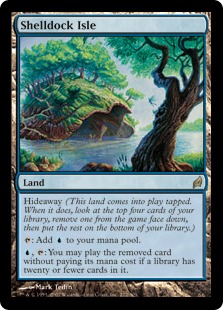
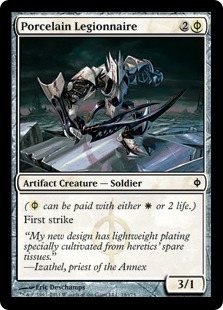
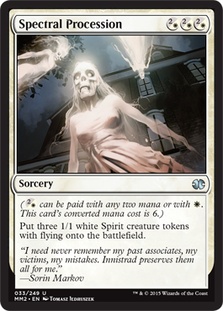
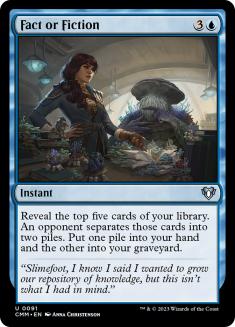
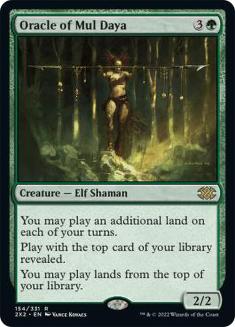
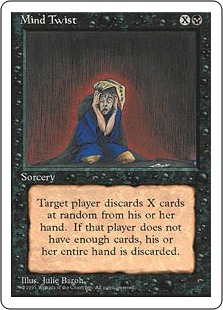
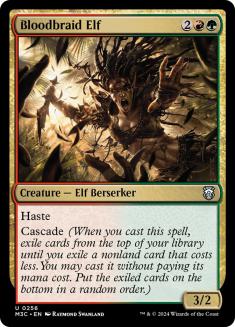
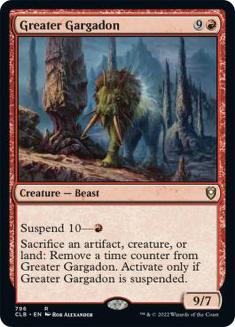
Thanks again for reading, and let me know what you think of the ten cards I talked about today as well as those above in the comments!
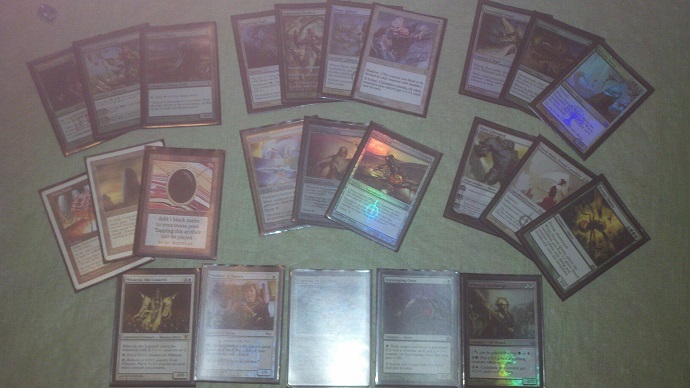
@JParnell1 on Twitter
Official Facebook Cube Drafting Page

